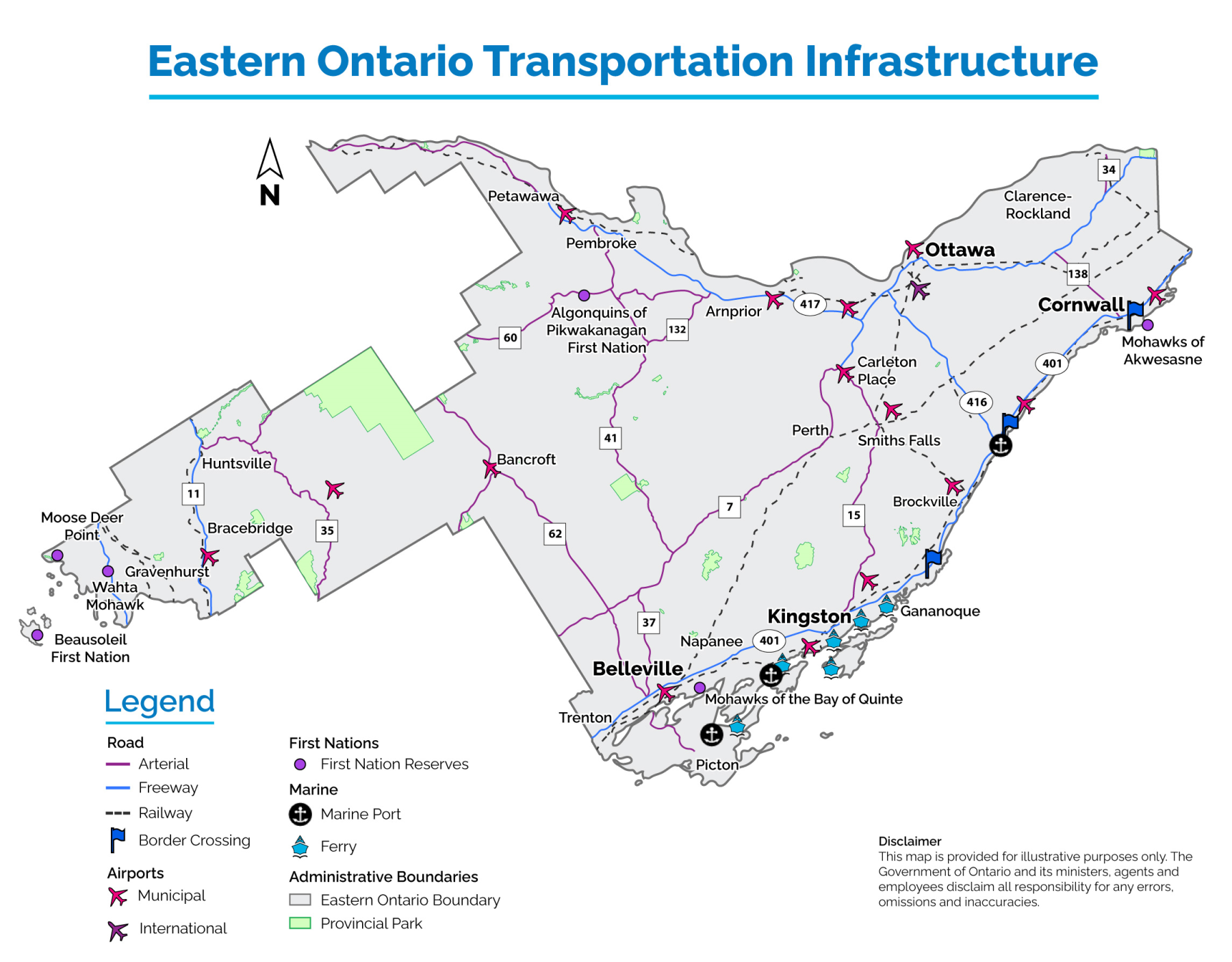Planning transportation for Eastern Ontario
Learn about our plan to get people and goods moving and how you can have your say about the future of eastern Ontario transportation.
About Eastern Ontario
The Eastern Ontario plan area stretches from the District of Muskoka in the west, south to Prince Edward County, east to Ottawa and the United Counties of Prescott & Russell, and north to the County of Renfrew.
Eastern Ontario is home to over 1.9 million people, with over half living in the City of Ottawa, and 1 million jobs. The region is expected to grow to almost 2.45 million residents by 2051. Approximately 75% of this growth is expected to occur in the Ottawa area.
The transportation system in Eastern Ontario includes:
- an international airport in Ottawa
- 5 ports
- 11 ferry services
- passenger and freight rail services delivered by VIA Rail, CN and CP
- intercommunity passenger transportation companies
- several major highways, including Highway 401, which is a major trade corridor, running from Montreal to Toronto and beyond
Important industries in the region include tourism, advanced manufacturing, agriculture and food processing, logistics and warehousing, and energy generation and distribution.

Our plan
A safe, efficient and connected transportation network is a foundation for a healthy and prosperous Ontario. Our draft plan for Eastern Ontario includes more than 50 actions for public transit, ferries, highways and more to:
- connect people and places
- support a competitive open for business environment
- improve safety and inclusion
- provide more choice and convenience
- prepare for the future
The plan was informed by research, technical work, an online public survey and a series of roundtables that helped us understand local needs and priorities.
The draft transportation plan is a living document that will continue to evolve.
Transportation planning study
To ensure Eastern Ontario’s transportation system is responsive to the province’s changing landscape, including projected population growth, emerging technologies, and the impacts of climate change, we are conducting a long-range transportation planning study that will:
- identify current and future transportation needs and opportunities
- determine the most effective actions to meet these needs
- find ways to implement the actions
- build upon the draft transportation plan by further refining our vision of Eastern Ontario to take us to the year 2051
There are four phases to the study:
Phase 1. Set goals and objectives for the long-range plan and determine how to measure success. Also develop forecasts of population and employment growth, and consider future expected impacts from climate change.
Phase 2. Undertake technical analysis to understand the different needs and opportunities for different modes of transportation (driving, public transit, ferries, trains, etc.), both now and in the future.
Phase 3. Identify potential actions to include in the long-range plan and evaluate which ones to recommend implementing.
Phase 4. Consolidate the findings in a recommended long-range transportation plan for the region that will support government decision-making.
Public input and engagement
To ensure the planning study reflects local understanding of the transportation system in eastern Ontario, Indigenous communities, municipalities, transportation stakeholders, and the public will have opportunities to provide their input through the process.
You will be able to provide feedback at different phases of the project, such as:
- commenting through the Environmental Registry of Ontario
- public surveys
If you have any questions about the study and how to get involved, please contact us by email at EasternTransportationPlan@ontario.ca